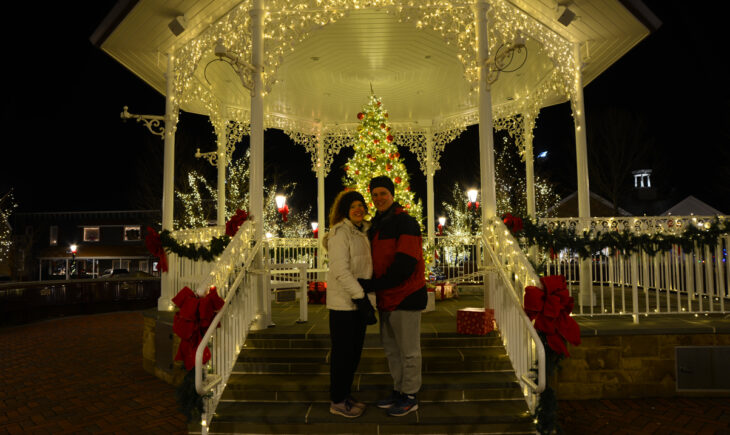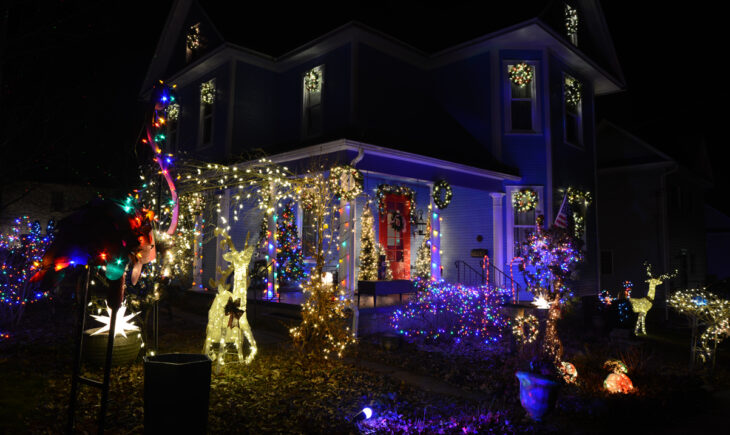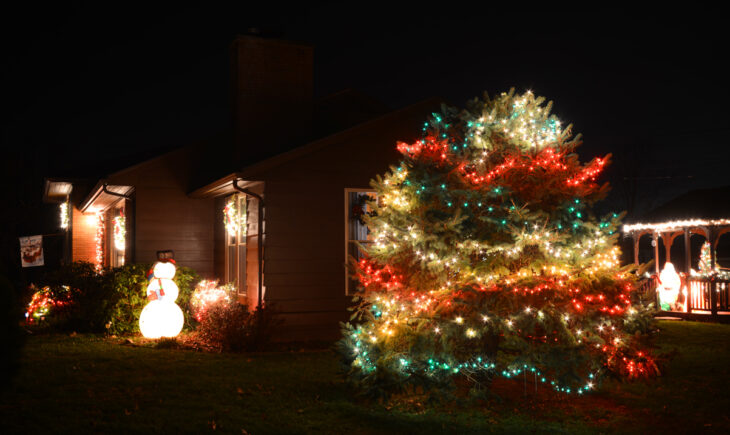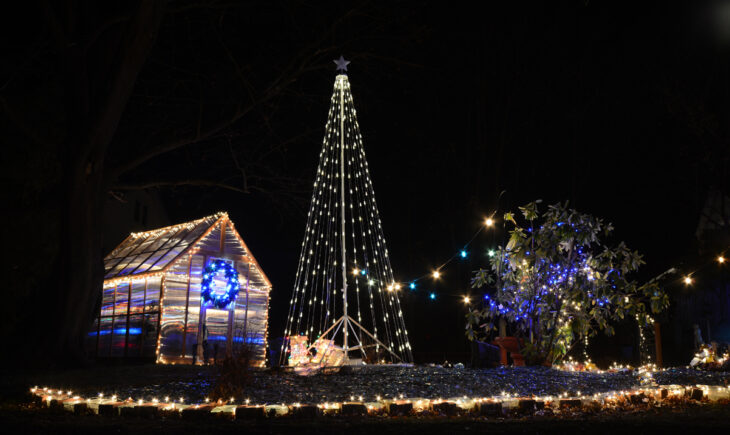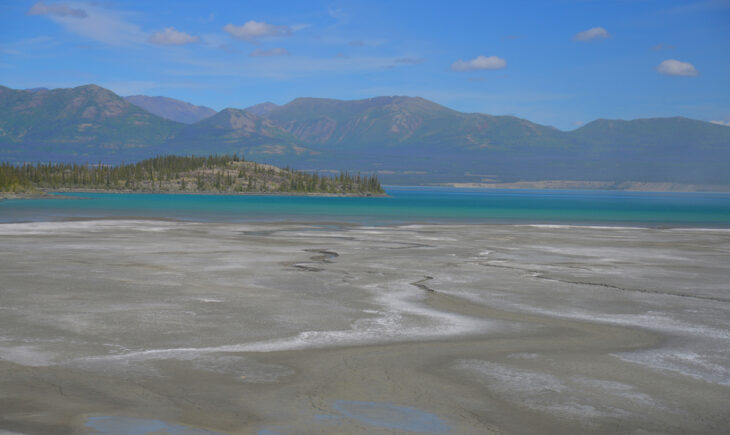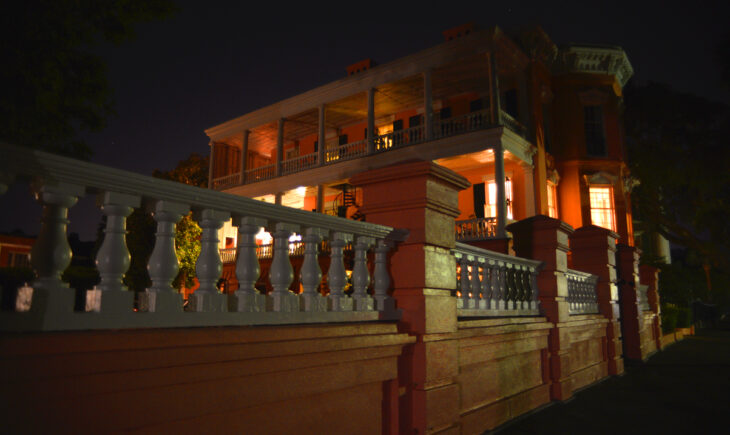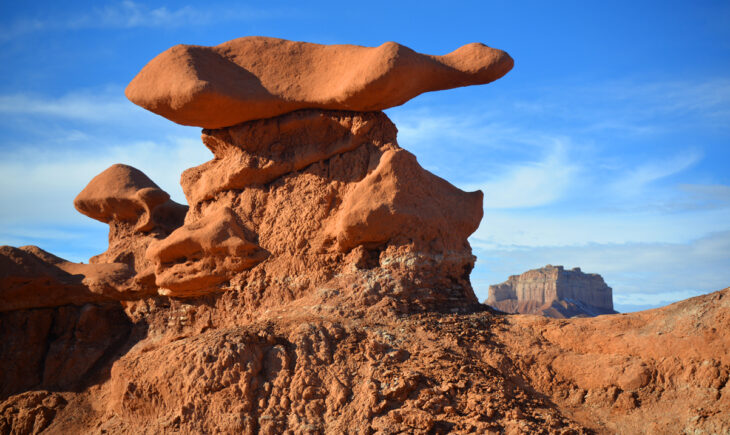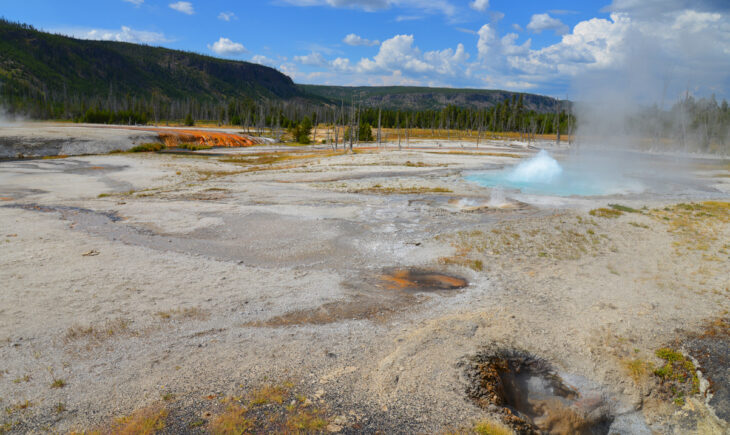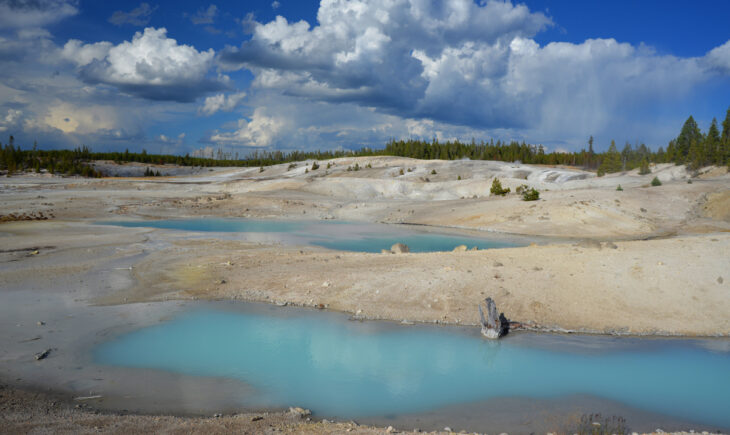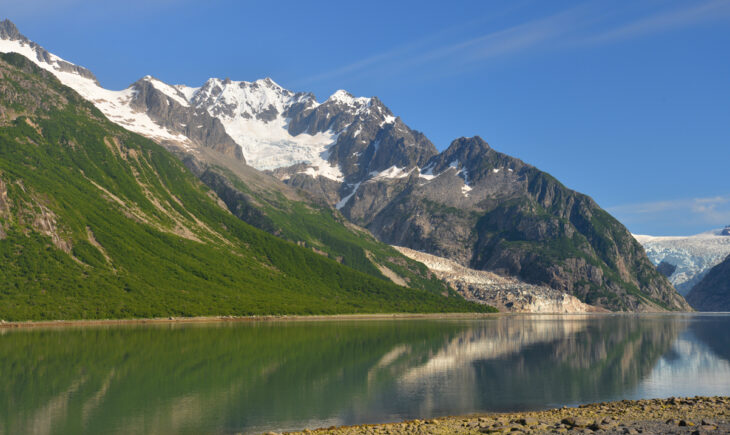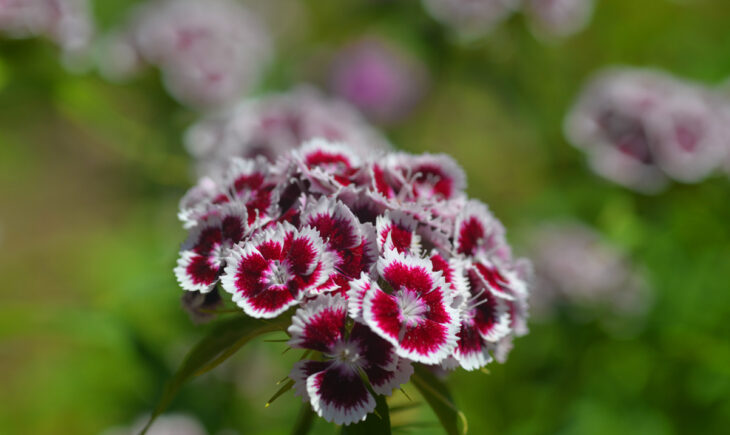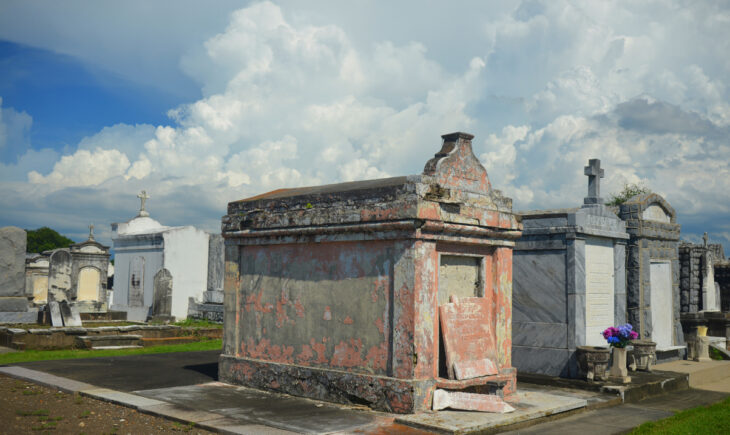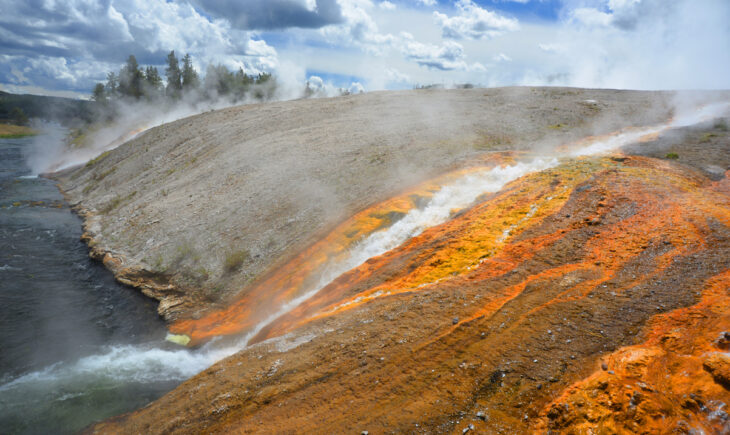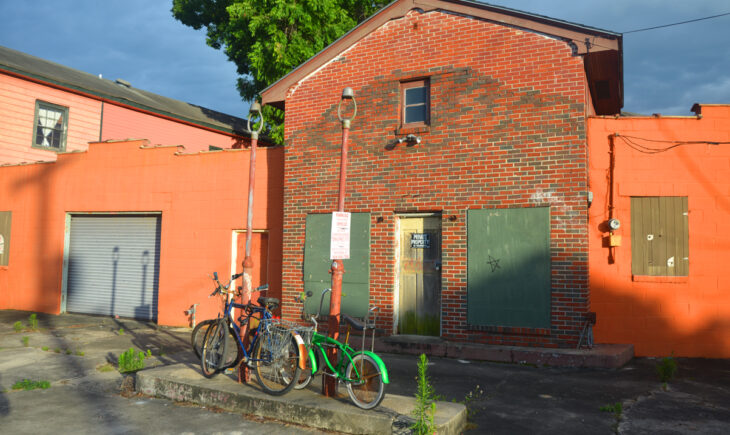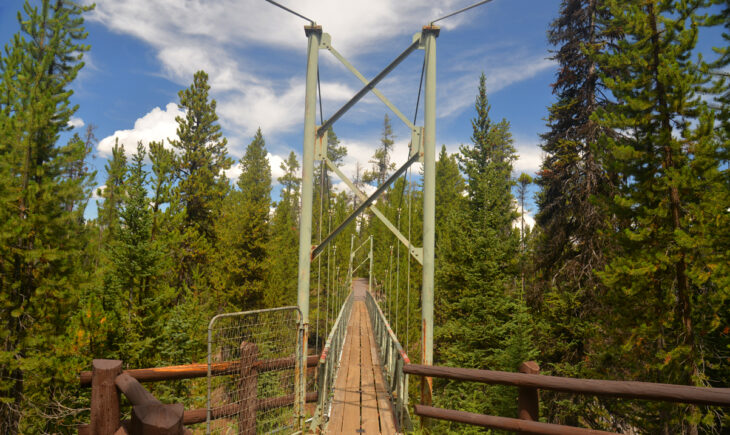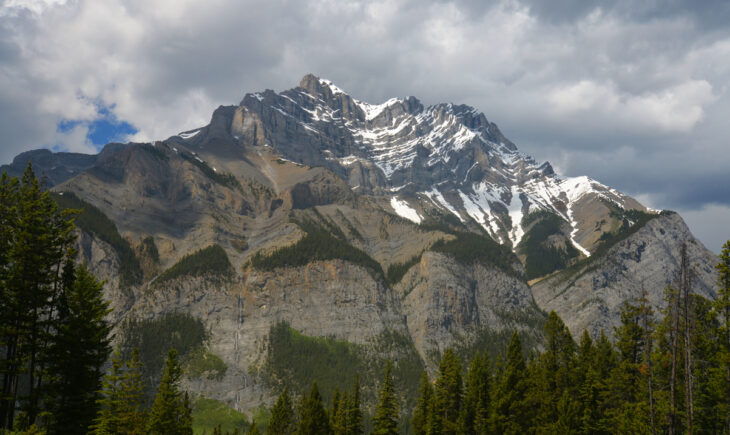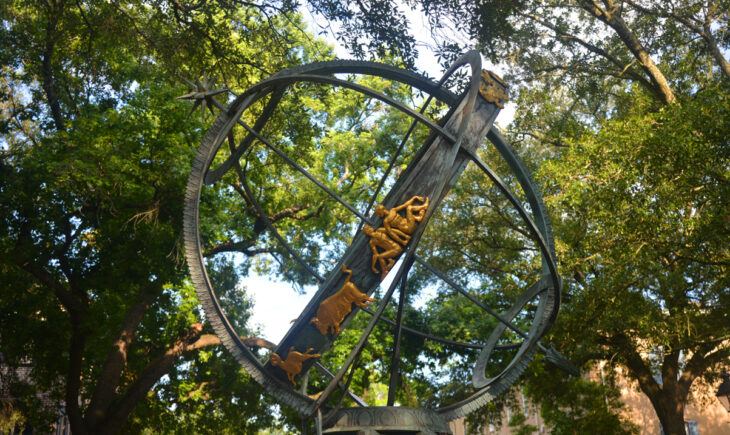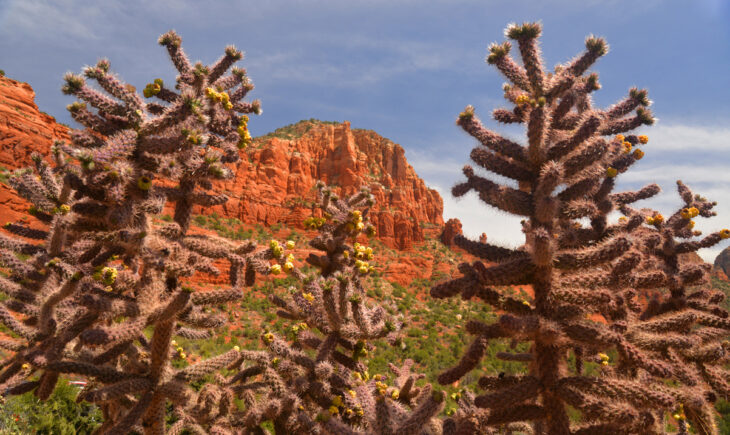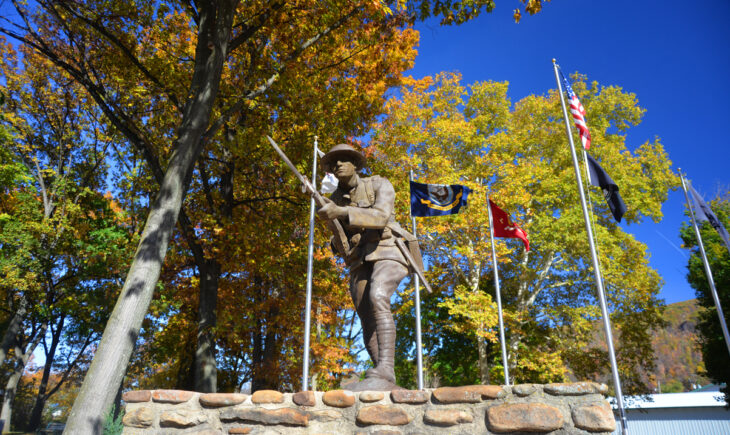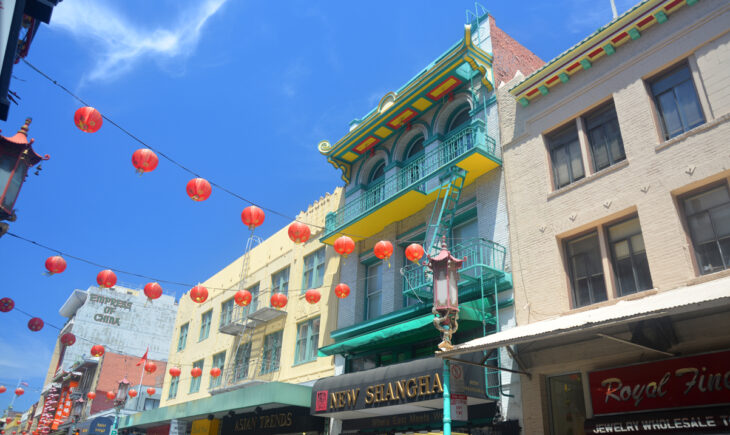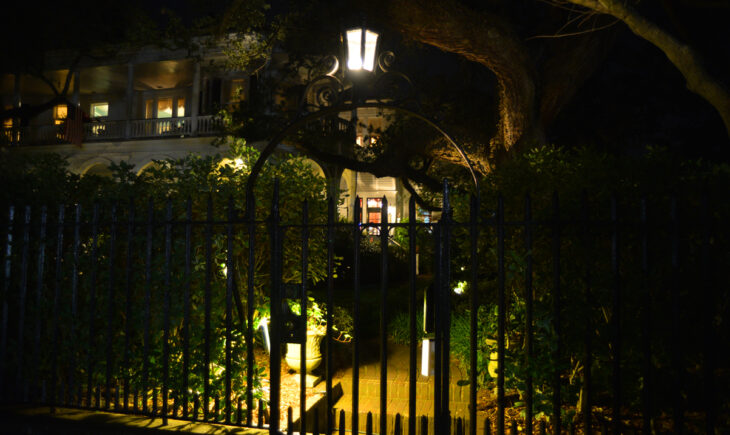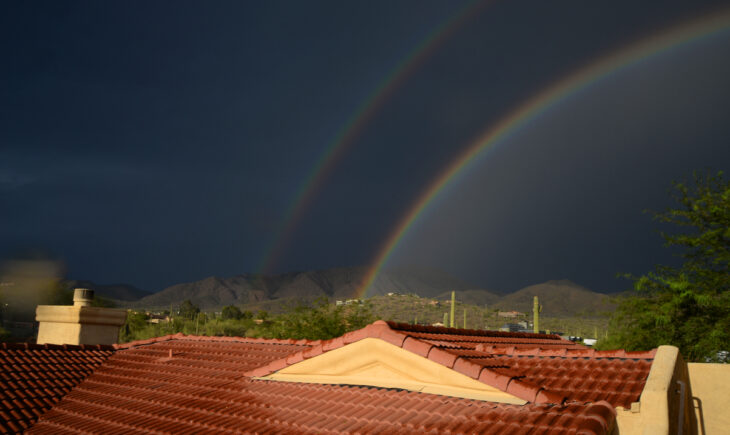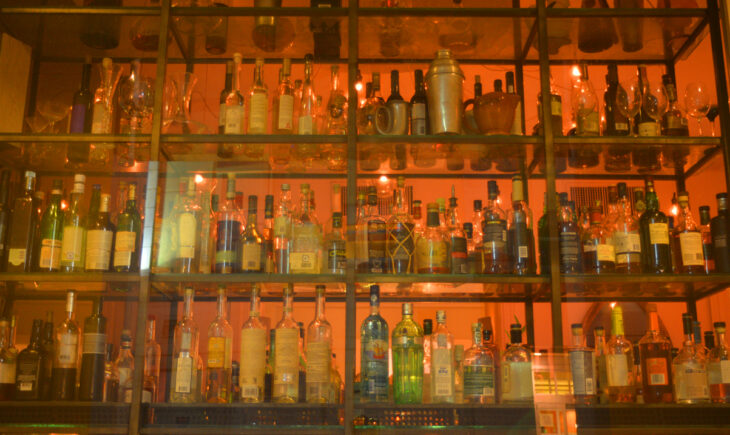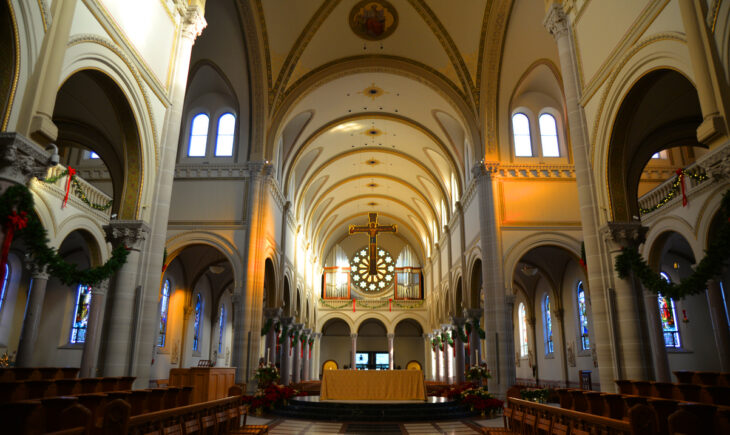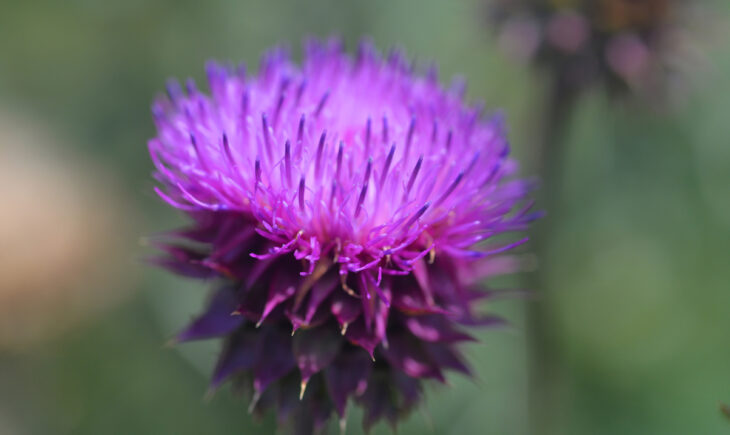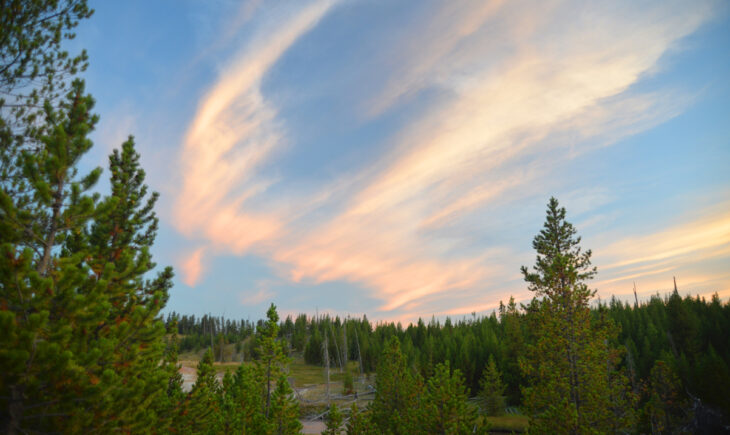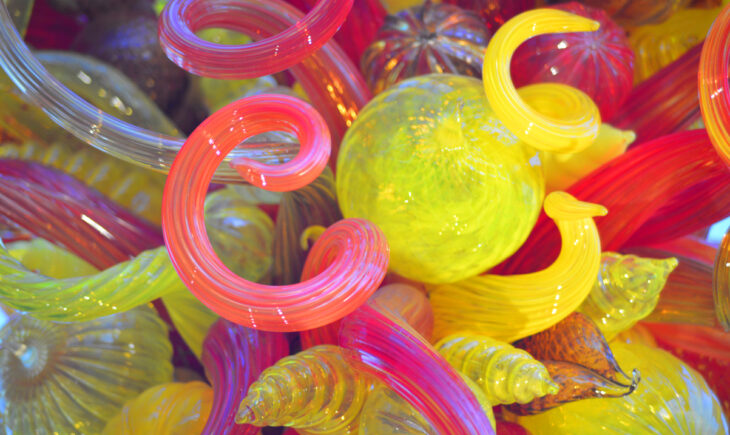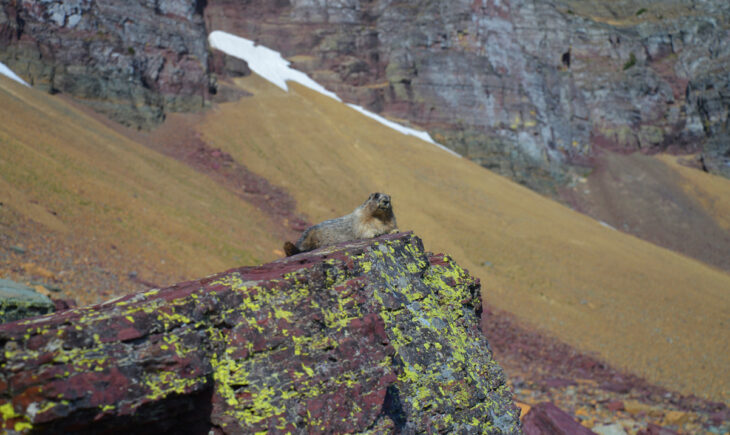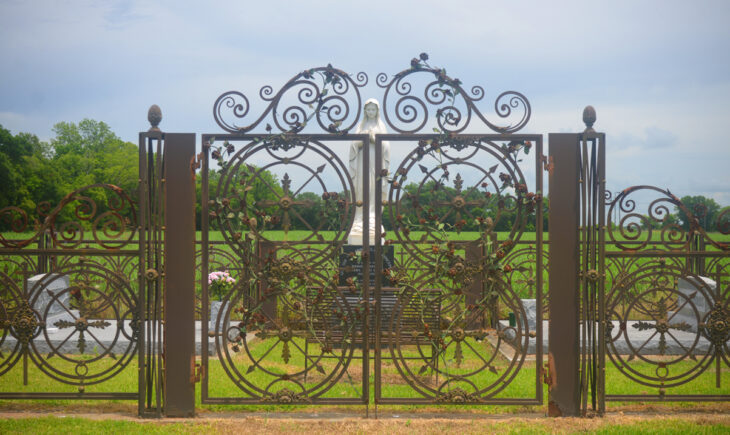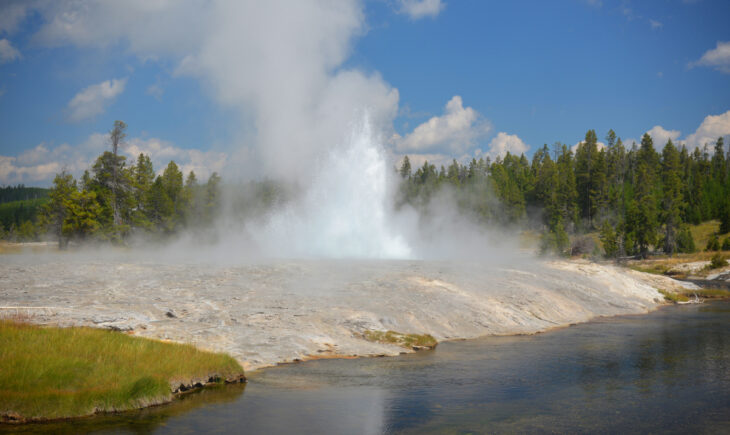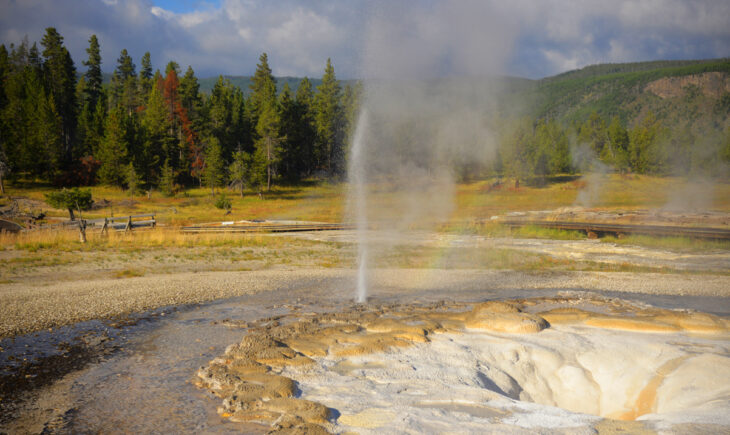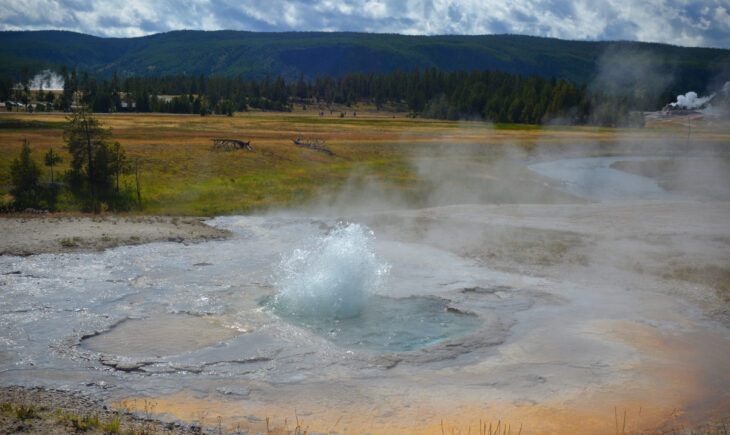And then there is Uncertain Geyser. Not the tallest geyser, nor the largest, nor the loudest, nor the most frequent. As a matter of fact it, as its name suggests, it is quite uncommon and very difficult to predict. But when it does erupt, it probably takes the cake as the most narrow geyser! It originates from a small hole only a couple of inches in diameter, that is strangely enough locate in the geyserite platform of Sawmill Geyser, of which a very detailed previous blog post was devoted. Unlike Uncertain Geyser, Sawmill Geyser itself is a very frequent performer, at least during times when it is active. Strangely, during the winter of 2016-2017, the entire Sawmill Geyser Group including Penta Geyser, Churn Geyser, and Old Tardy Geyser went dormant, catching everyone by surprise. Only Spasmodic Geyser continued to show any life, though it stayed way below its normal water level and only gently bubbled from a couple of vents as opposed to its usual very vigorous activity in its various vents from which it earned its name. Nearby Tardy Geyser showed some small water pushes, but nothing more. After a few more years of dormancy, it was wondered whether the Sawmill Geyser Group was ever going to erupt again! Going back to the events leading up to the strange dormancy, there were subtle hints that not all was right with the Sawmill Group. Months before the entire Sawmill Geyser Group shut down, Uncertain Geyser had already stopped erupting. Being that it was Uncertain Geyser, and not one of the more active geysers in the group, it was assumed at the time that it was just Uncertain Geyser doing what it does: being uncertain. However, the other geysers also began to show diminished activity, though this was during the late fall and winter months in the high altitudes of Yellowstone National Park in northwest Wyoming, when feet of snow covers the ground and very few observations can be made for a distant and remote geyser group. But it was obvious come that next spring and summer season that the Sawmill Geyser Group had become dormant. Their usually vibrant siliceous sinter platforms and runoff channels covered with colorful thermophile bacteria had all dried up, leaving behind just dull gray crumbling material. During these years since, they have been monitored closely for any sign of activity, with hope that someday everything will return to normal. During the years of normal active eruption behavior, the Sawmill Geyser Group begins with activity from Spasmodic Geyser and continues usually with activity from Sawmill Geyser as a frequent and long lived eruption. Other times it continues instead with activity from both Penta Geyser and Churn Geyser. After hours of eruptions from the group, it will cycle through brief periods of quiet before starting up again. Occasionally the brief periods of quiet become longer by several hours, during which time all of the Sawmill Geyser Group features will drain almost completely. Known as a deep drain, water will barely be visible in the system. It is during these rare deep drain periods that the lone Uncertain Geyser can suddenly spring to life out its small nondescript hole in the geyserite platform of Sawmill Geyser. In the above image, an Uncertain Geyser eruption was captured by The Wild Images Team sporting an early morning rainbow in its steam. In the foreground on the bottom right can be seen the vent of Sawmill Geyser, completely devoid of water during this deep drain period. In the background can be seen steam gently rising from a quiet Churn Geyser vent. So this one thin geyser is stealing the show from the entire geyser group that is almost always found in eruption. By comparison, Uncertain Geyser only erupts once every 2-10 days! The boardwalk in the background heads left towards Castle Geyser, of which was detailed in this previous water phase blog post and this previous water-steam phase blog post. The boardwalk in the background also heads right towards Grand Geyser, of which was detailed in this previous pause burst blog post. It continues on past there and eventually reaches Oblong Geyser of which is detailed in this detailed blog post. A distance beyond there it finally reaches the Grotto Geyser Complex, of which several previous blog entries detail its stages as Grotto Fountain Geyser, Grotto Geyser, Rocket Geyser, and finally Spa Geyser. We are happy to report that just this past summer Sawmill Geyser suddenly sprang back to life in mid-June, with Uncertain Geyser finally making its first appearance on July 31! The Wild Images Team has captured many other photos in Yellowstone National Park including a Beehive Geyser eruption with a massive rainbow, the world famous Old Faithful Geyser with water textures, a towering Grand Geyser pause burst eruption, a sunset Castle Geyser eruption with a bright rainbow, an afternoon Riverside Geyser eruption with a rainbow, an early morning Lion Geyser eruption with a rainbow, a very difficult to catch Oblong Geyser blue burst eruption, the extremely powerful Artemisia Geyser eruption with deep bursts, the very moment of waves from a Great Fountain Geyser initial eruption, an iconic White Dome Geyser eruption at sunset, the large bursts of a Fountain Geyser eruption in steam, the delicate red light on a Grotto Fountain Geyser eruption at sunset, the defining moment of a Rocket Geyser eruption at sunset, the extremely brief Aurum Geyser eruption with colors, a view through a Cliff Geyser eruption of Black Sand Basin, the colorful patterns of bacterial mats in Midway Geyser Basin, the changing conditions that cause a rainbow to parallel the Snow Lodge, the Biscuit Basin duo of Black Diamond Pool and Opal Pool, the colorfully pock marked waterways of the erupting Blood Geyser, the active steppes of the Mineral Terraces of Mammoth Hot Springs, the distant double rainbow over the Lewis River Canyon, the before eruption reflections of sunset over the terraces of Great Fountain Geyser, the deep colors of sky reflections over Beauty Pool, the thermally induced sunset light filters through the steamy trees, the intense moment of mammatus clouds over the Firehole River, the very early morning fog surrounding Lower Yellowstone Falls, the runoff created reflections over the colorful runoff pan of Constant Geyser, the unworldly terrain of the extensive Porcelain Geyser Basin in Norris, the deeply hued steam over colorful bacterial mat reflections of Grand Prismatic Spring, the contrast of runoff channels surrounding the blue superheated water of Sapphire Pool, differing wave patterns created by the colorful submerged Fishing Cone Geyser, the strong green created by the record depths of mysterious Abyss Pool, the moment the full moon rises over the Grant Village Lakehouse, the cloud symmetry of a sunset reflection over a calm Yellowstone Lake, and moments earlier with a cloud shelf reflection over a calm Yellowstone Lake, each of which are available for sale in our store. Blog posts from Yellowstone National Park have documented the Old Faithful Geyser eruptions, the steamy Oblong Geyser eruptions, the deep drain Uncertain Geyser eruptions, the steep crater Depression Geyser eruptions, the amphitheater Grand Geyser eruptions, the impressive Fan and Mortar Geyser eruptions, the very quick Aurum Geyser eruptions, the rooster tail Whirligig Geyser eruptions, the series type Lion Geyser eruptions, the tall grotto White Dome Geyser eruptions, the frequent Sawmill Geyser eruptions, the double cone Atomizer Geyser eruptions, the nozzled Beehive Geyser eruptions, the cratered Fountain Geyser eruptions, the deep pool Artemisia Geyser eruptions, the playful Vixen Geyser eruptions, the scenic Riverside Geyser eruptions, the very rare Ledge Geyser eruptions from above, the very rare Ledge Geyser eruptions from below, the gurgling Tilt’s Baby Geyser eruptions, the bursts of Great Fountain Geyser eruptions, the hidden Dome Geyser eruptions, the tilted Daisy Geyser eruptions, the remote Pink Cone Geyser eruptions, the long Castle Geyser eruption water phases, the loud Castle Geyser eruption steam phases, the stark Constant Geyser eruptions, the rim wall Cliff Geyser eruptions, the initiation from Grotto Fountain Geyser eruptions, the continuation of Grotto Geyser eruptions, the defining moment of Rocket Geyser eruptions, the marathon Spa Geyser eruptions, the blue waters of a Spouter Geyser eruption, the isolated Artist Paint Pots throwing mud, the little seen intricate burst of a mud volcano, a view of a dozen visitors under a Beehive Geyser rainbow, the eruption through numerous vents of Fan and Mortar Geysers, the enormous amount of water through the runoff channels of Excelsior Geyser, the otherworldly view of cloudy blue runoff pools in the Porcelain Basin, the moment that a large bison bull rolled in his claimed dirt pile, the rule for the right of way wildlife, the high altitudes where a large raven that perches over the Dunraven Pass, the the day that a phoenix streaked across the backcountry sky, the trail from Grant Village that crosses over this suspended bridge, The Wild Images Team in the Grand Canyon of the Yellowstone, our Photographer Jeremy Robinson shadowed in Morning Glory Pool, and The Wild Images Team Travel Gnome at the Yellowstone National Park entrance sign.
To see more photos, please visit our store

